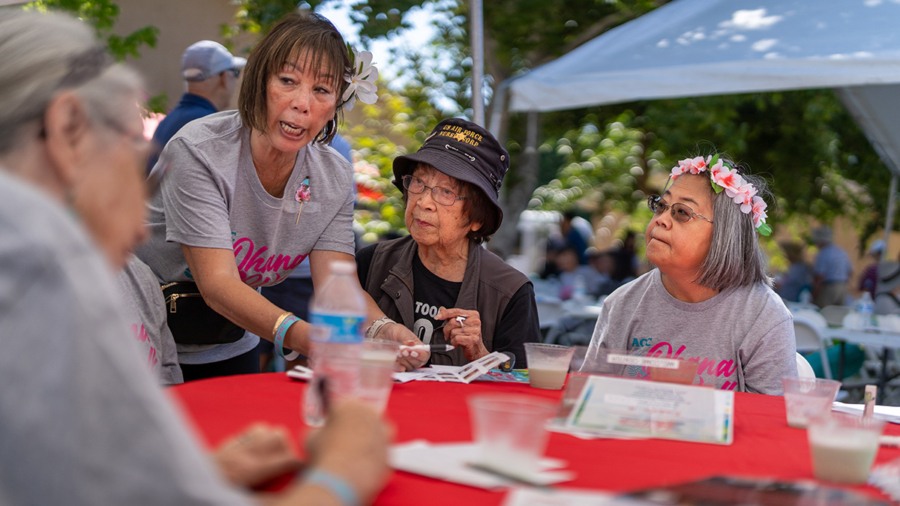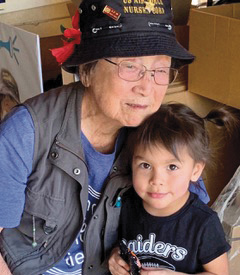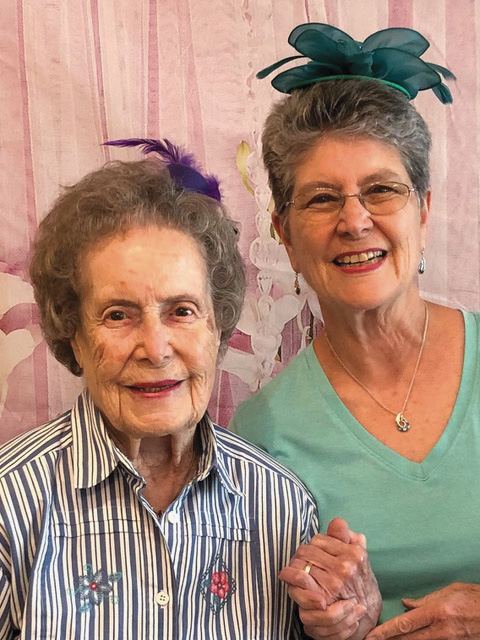Glen Shimazu grew up on a Delta farm. At age 102, he still loves tending to the vegetable gardens and fruit trees surrounding his home in Sacramento.
Born March 1921 in Sacramento to Japanese immigrant parents, he had two brothers and one sister. An older sister remained in Japan when his parents relocated to California. Glen’s father was the foreman of a pear orchard in Courtland. “It was hard work, picking and packing the fruit by hand. I learned to drive tractors when I was very young,” recalls Glen. Like other Japanese children in the Delta, he attended Bates Oriental School and Holland Japanese School.
Glen was a senior at Courtland High School when his family left for the Gila River internment camp in Arizona. In 1943, everyone in camp was asked to complete a loyalty questionnaire. Glen joined others in responding “no” to certain questions. By doing so, he was identified as being disloyal, aka a “No-No Boy.” His entire family was subsequently transferred to Tule Lake internment camp.
In November 1945, Glen and his father were released from Tule Lake. They returned to Sacramento and stayed in a hostel at Parkview Presbyterian Church. Around 1946, they had saved enough money to rent a house in Hood at a pear orchard. The rest of the family was able to leave Tule Lake internment camp and return to the house in Hood.
The family pooled their resources to purchase seven acres of land in South Sacramento for the purpose of farming. They harvested tomatoes, eggplant, daikon, and cucumbers and sold the crops to local stores. When the family stopped farming, they built homes on the land. Glen still lives in the home he built in 1960.
In the early 1950s, Glen figured he’d better settle down. He was working at McClellan Air Force Base. A mutual friend introduced him to Mary Seno. Raised in Florin, she was working at the Sacramento Army Depot. They married in 1955 and had three children, Yvonne, Dwayne, and Alene. They had 57 years together before Mary passed in 2012.
The couple found time to travel around the world, collecting rocks from every city they visited. Glen proudly showed me their unique rock collection; each rock is engraved with the site and date the couple were there.
What’s his secret to living so long? Glen says maybe it’s because he’s nice to everyone he meets. And he’s done a lot of volunteer work. He was one of the original volunteers with the Meals on Wheels program when ACC took over operations. He used to take a bus to play the slot machines in Reno and Tahoe, but these days, family members drive him to Red Hawk and Sky River casinos. Frequent visits from his children and five grandchildren keep him going.
Yvonne says her dad is a farmer at heart, spending long hours tending his garden and fruit trees. I can vouch for his green thumb – the Chinese long beans he gave me were delicious.











